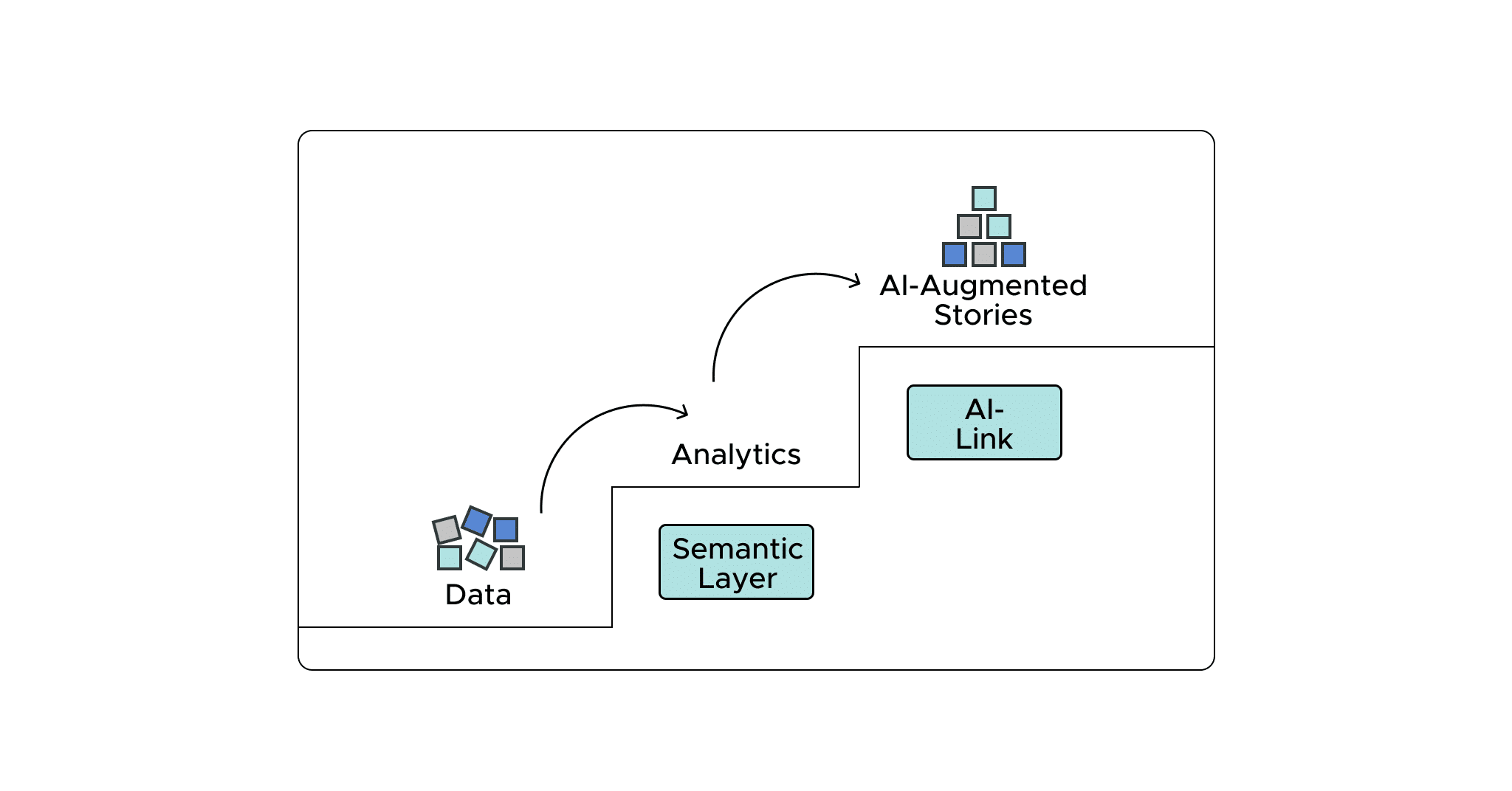December 15, 2022
How to Maximize the Value of AI and BI at Scale
The AtScale semantic layer is a powerful tool to help enhance data storytelling projects to make them more effective.
AtScale provides a simple, intuitive interface that allows users to access common data models. These models accurately and consistently represent business processes from multiple data sources. This reduces the time and complexity required to represent and analyze these processes. Plus, with AtScale AI-Link, users can supercharge existing reports with AI-augmented analytics.
What is Data Storytelling?
Before we dive into what augmented analytics can do for data-driven storytelling, let’s start with the very basics. What even is data-driven storytelling, and why is it important for business?
Basically, data-driven storytelling is the process of transforming raw data into a consistent narrative. It’s how we can turn empirical insights into active action. Turning data into an easy-to-read and easy-to-follow story is essential to making better business decisions. That’s because when teams are able to visualize and put data into context, they can make choices based on the big picture instead of just pieces of the puzzle.
What are AI-Augmented Analytics?
AI-augmented analytics is another emerging field that combines AI and ML techniques with data analysis to automate and accelerate insights. AI-augmented analytics can help enable better and faster business decisions by providing insights that might’ve been otherwise missed.
AtScale AI-Link brings a new level of sophistication to data storytelling. How? By enabling on-demand access to AI-augmented analytics.
AI-Link allows analysts with minimal Python experience to represent the work of ML model builders (data scientists, ML engineers) in a governed, business-friendly manner. This drastically reduces ML model deployment overhead and introduces self-serve consumption of ML predictions and metadata. AI-Link lets users easily:
- Join ML inference tables of predictions and ML metadata (like feature importance) back to AtScale semantic models. This helps augment existing reports with AI-generated insights.
- Embed ML models directly into AtScale semantic models. This puts on-demand ML prediction generation right at the fingertips of domain experts and analysts.
By integrating AI with the AtScale semantic layer, users can gain more insights from their data faster and with less manual effort.
Create Powerful, Tangible Stories With AtScale and AI-Augmented Analytics
Imagine a data analyst at a retail company who wants to create a dashboard of the top-selling products by region. With AtScale, they can quickly access the data they need from multiple sources, including transactional databases and external data sources like social media or weather data. The semantic layer abstracts away the complexity of data preparation and integration, allowing the analyst to focus on analysis and visualization.
However, this analysis alone might not provide enough context or insights to inform a compelling story. This is where AI-augmented analytics comes in.
By incorporating ML predictions, the analyst can identify patterns and anomalies in the data that might not be immediately visible to the human eye. Then, they can create a holistic view of the past and future sales of a product to influence strategic imperatives and tell a powerful story. For example, AI might help to uncover that sales of a particular product are correlated with weather conditions in a specific region or that a marketing campaign in a particular region is driving sales of a specific product category.
By combining the power of AtScale and AI-augmented analytics, the analyst can create a data-driven narrative that is more engaging and informative than a simple list of figures.
Domain Experts Have Immediate Access To Create Their Own AI-Augmented Stories
AtScale and AI-augmented analytics in data storytelling also allow for more iterative and interactive analysis. With traditional data analysis methods, analysts might spend days or weeks preparing and cleaning data before they can even start analyzing. But with AtScale, data can be accessed in real-time, allowing analysts to explore the data and adjust their analysis on the fly.
The AtScale semantic layer offers users the ability to not only access AI inference but also the ability to generate it on the fly — all correlated back to well-understood business logic. When taking advantage of AtScale aggregates, these models and model inference can be analyzed in multiple dimensions based on the latest available data, reducing overhead associated with model retraining and deployment.
This iterative approach can lead to more creative and innovative analysis, as analysts can test out different hypotheses and explore new avenues of inquiry. For example, a data analyst might notice a spike in sales for a particular product in a specific region and wonder if it is related to a local event or holiday. With AtScale and AI-augmented analytics, they can quickly test out this hypothesis by looking at social media or news feeds.
Use AI for Real-Time Insights
The ability to quickly iterate and test out new ideas can lead to more innovative data storytelling. By incorporating real-time data and insights into their narratives, analysts can create more dynamic and engaging stories that are tailored to their audience’s needs.
Using AtScale and AI-augmented analytics in data storytelling can help organizations become more data-driven overall. By empowering more users to access and analyze data, organizations can create a culture of data-driven decision-making that extends beyond the IT department.
You can’t unlock data-driven insights without knowing where the story begins. Learn about the four essential elements of data storytelling.
RESEARCH REPORT